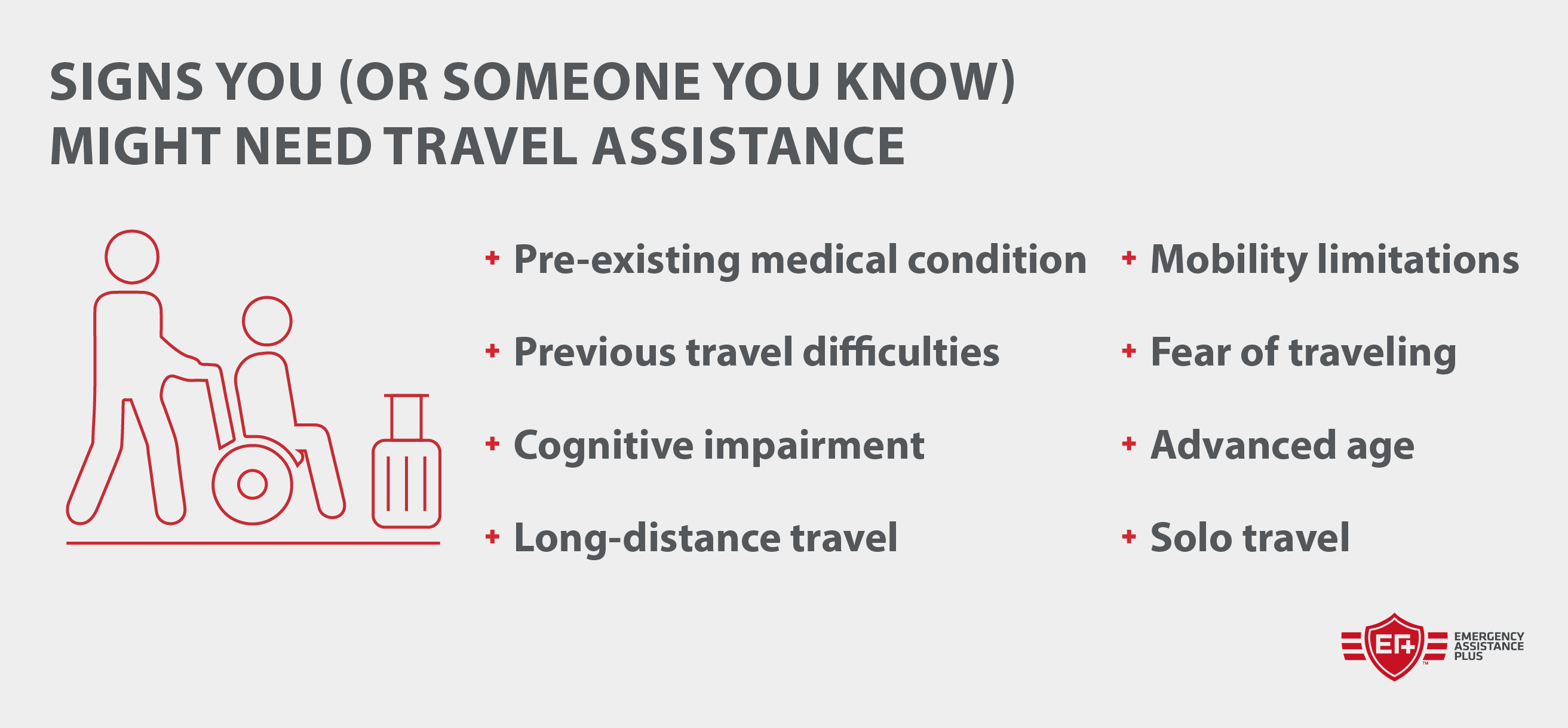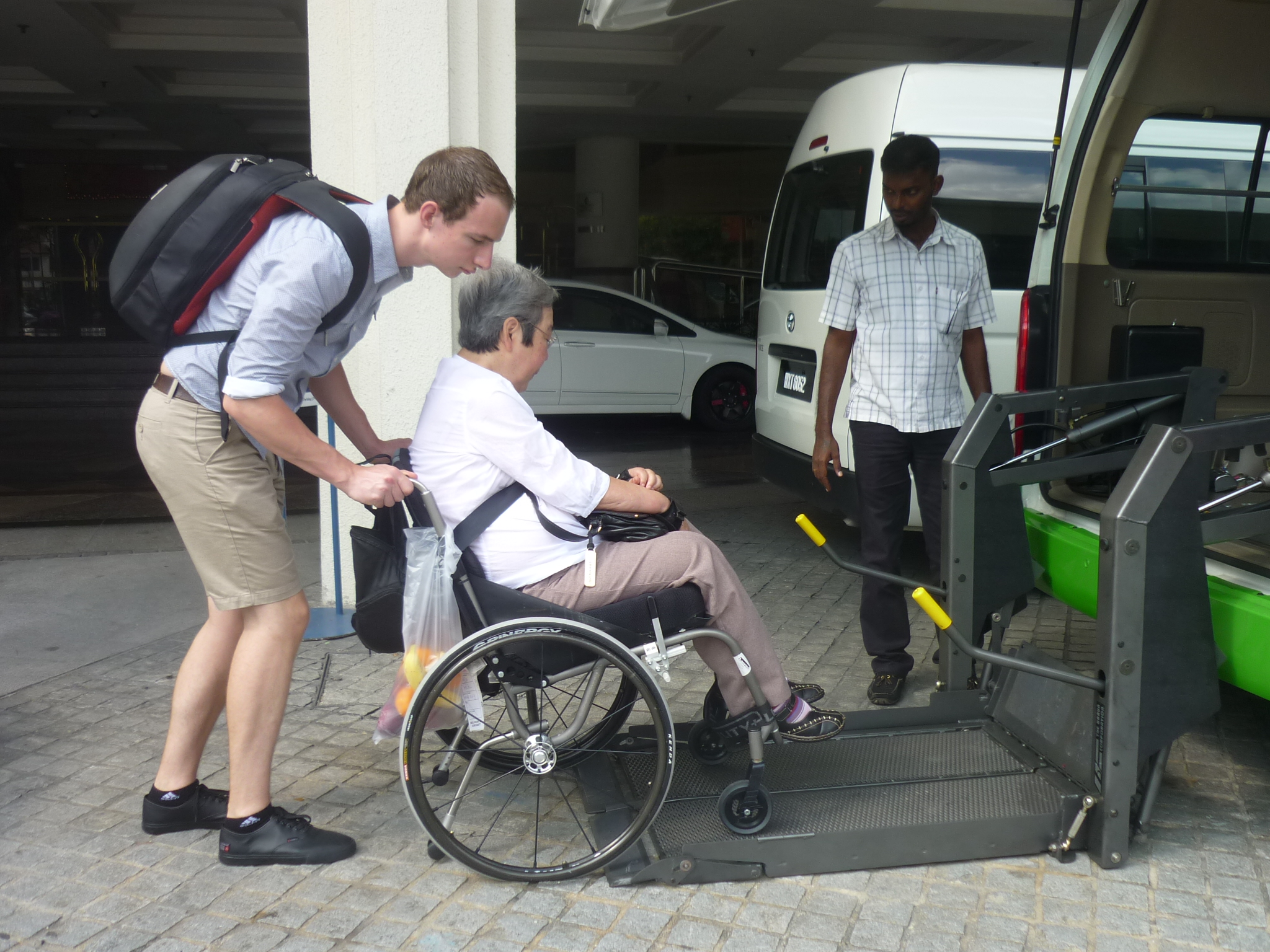Assisted travel for elderly individuals is rapidly evolving, offering a wider range of options for seniors seeking adventure and connection while prioritizing safety and comfort. From fully escorted tours to independent travel assistance, the industry caters to diverse needs and budgets, ensuring that age is no barrier to exploration. This guide delves into the various aspects of assisted travel, providing essential information for planning a safe and enjoyable trip for older adults.
This exploration covers everything from choosing the right type of assisted travel based on individual needs and capabilities to understanding the accessibility features available in different modes of transport. We will examine the crucial role of planning and booking, health and medical considerations, budgeting strategies, and the innovative technological aids that enhance the travel experience for elderly travelers. The goal is to empower seniors and their families to make informed decisions, ensuring a memorable and worry-free journey.
Accessibility and Safety Features: Assisted Travel For Elderly
Ensuring comfortable and secure travel for elderly individuals requires careful consideration of accessibility and safety features across various transportation modes. Assisted travel providers are increasingly focusing on these aspects to cater to the growing senior travel market. This section details essential features and safety protocols implemented by leading companies.
Explore the different advantages of aarp senior travel tours that can change the way you view this issue.
Essential accessibility features are crucial for enabling elderly travelers to navigate different transportation methods with ease and independence. These features significantly improve the overall travel experience, promoting comfort and reducing potential stress or difficulties.
Accessibility Features in Various Transportation Modes
Various modes of transport require different accessibility features to cater to the needs of elderly travelers. These features aim to minimize physical exertion and potential hazards, making journeys smoother and more enjoyable.
- Air Travel: Priority boarding and disembarking, accessible restrooms with ample space, wheelchair assistance throughout the airport and onboard, and clearly marked accessible seating.
- Rail Travel: Accessible train cars with ramps and wide aisles, designated seating areas with extra legroom, accessible restrooms, and audio/visual announcements.
- Cruise Travel: Ramps and elevators throughout the ship, accessible cabins with ample space for wheelchairs and walkers, grab bars in bathrooms and hallways, and accessible shore excursion options.
- Car Travel: Vehicles with easy entry and exit, such as ramps or lifts, adjustable seats and steering wheels, and accessible luggage compartments.
Safety Protocols and Emergency Procedures
Robust safety protocols and well-defined emergency procedures are paramount for ensuring the well-being of elderly passengers. These measures provide reassurance and mitigate potential risks during travel.
- 24/7 Support: Many assisted travel providers offer round-the-clock support via phone or dedicated apps, allowing passengers to access assistance at any time.
- Medical Assistance: Pre-trip health assessments, access to medical personnel during travel, and partnerships with local medical facilities for emergencies are common features.
- Emergency Response Plans: Clearly defined emergency procedures for various scenarios, including medical emergencies, accidents, and natural disasters, are crucial for passenger safety.
- Trained Personnel: Staff trained in handling elderly passengers’ specific needs, including mobility assistance and medical emergencies, are vital for a safe journey.
- Travel Insurance: Comprehensive travel insurance packages are often included, covering medical emergencies, trip cancellations, and lost luggage.
Comparative Analysis of Assisted Travel Companies
A comparison of three major assisted travel companies highlights the variations in safety features and accessibility options they offer. This comparison provides insights into the level of support each company provides to elderly travelers.
| Feature | Company A | Company B | Company C |
|---|---|---|---|
| 24/7 Support | Yes, via phone and app | Yes, via phone | Yes, via phone and app |
| Wheelchair Assistance | Airport and onboard | Airport only (onboard assistance requires prior notice) | Airport and onboard |
| Medical Assistance | Pre-trip assessment, onboard medical kit, partnerships with local hospitals | Onboard first-aid kit, emergency contact information | Pre-trip assessment, 24/7 medical consultation hotline, partnerships with local hospitals |
| Accessible Transportation | Wide range of accessible options across all modes | Primarily focuses on air and rail travel | Offers accessible options for air, rail, and cruise travel |
| Emergency Response Plan | Detailed plan for various scenarios, regular drills | Basic emergency contact information | Comprehensive plan with detailed procedures and regular training for staff |
Planning and Booking Assisted Travel

Planning a trip for an elderly person requiring assistance involves careful consideration of several factors to ensure a safe, comfortable, and enjoyable experience. This process goes beyond simply booking flights and hotels; it requires proactive planning to accommodate specific needs and preferences. Successful trip planning hinges on meticulous attention to detail and a thorough understanding of the traveler’s capabilities and limitations.
Destination Selection and Accommodation
Choosing the right destination is paramount. Factors to consider include climate, accessibility of attractions, proximity to medical facilities, and the overall pace of the trip. Destinations with manageable terrain, readily available transportation options, and a slower pace of life are generally preferred. For example, a coastal town with accessible beaches and gentle walking paths might be more suitable than a bustling metropolis with numerous stairs and uneven pavements.
Accommodation should prioritize accessibility features such as ramps, elevators, grab bars in bathrooms, and appropriately sized rooms. Consider booking accommodations with on-site assistance options, or those close to reliable medical care. Hotels with accessible rooms and concierge services specializing in elderly care are excellent options.
Itinerary Creation for Assisted Travel
Developing a detailed itinerary is crucial for managing expectations and ensuring a smooth journey. The itinerary should factor in rest periods, allow for flexibility, and account for potential delays. Activities should be carefully selected to match the traveler’s physical capabilities and interests. Over-scheduling should be avoided, and activities should be spaced out to prevent fatigue. It’s advisable to incorporate backup plans for unforeseen circumstances, such as inclement weather or unexpected health issues.
Transportation should be pre-arranged and clearly Artikeld within the itinerary, considering the use of accessible taxis, private car services, or public transport with adequate accessibility features.
Sample Seven-Day Assisted Travel Itinerary: Coastal Maine, Assisted travel for elderly
This itinerary focuses on a relaxing trip to Kennebunkport, Maine, known for its charming seaside atmosphere and accessible attractions.
| Day | Activity | Accommodation | Accessibility Notes |
|---|---|---|---|
| 1 | Arrival in Kennebunkport; Check-in at The Boathouse Waterfront Hotel (known for its accessible rooms and amenities). | The Boathouse Waterfront Hotel | Wheelchair accessible rooms, elevators, ramp access. |
| 2 | Gentle stroll along the Kennebunkport Beach; Lunch at a waterfront restaurant with accessible seating. | N/A | Mostly flat terrain, paved walkways. |
| 3 | Visit the Seashore Trolley Museum (offers accessible trams and exhibits). | Seashore Trolley Museum | Wheelchair accessible trams and facilities. |
| 4 | Relaxing boat tour of the Kennebunk River (ensure the vessel is accessible). | N/A | Check accessibility features with the tour operator beforehand. |
| 5 | Shopping at Dock Square (many shops have accessible entrances). | N/A | Check individual shop accessibility. |
| 6 | Visit the Bush Compound (check accessibility before visiting). | N/A | Confirm accessibility details in advance. |
| 7 | Departure from Kennebunkport. | N/A | N/A |
Key Considerations for Elderly Travelers: Prioritize comfort and safety. Choose destinations and activities appropriate for the traveler’s physical capabilities. Plan for rest periods and flexibility. Ensure accessible transportation and accommodations are booked in advance. Have a comprehensive medical plan in place, including emergency contacts and necessary medications.
Booking Platforms and Agencies
Several specialized agencies and online platforms cater to assisted travel for seniors. These services often include assistance with booking flights, accommodations, transportation, and excursions, as well as on-site support. Pricing structures vary widely depending on the level of assistance required, the destination, and the duration of the trip. Some agencies offer customizable packages, allowing travelers to select specific services based on their individual needs.
Comparing services and pricing across different providers is essential to find the best value and ensure the chosen agency meets the traveler’s specific requirements. Directly contacting agencies and obtaining personalized quotes is recommended for a clearer understanding of the costs involved.
Health and Medical Considerations

Planning an assisted trip for elderly individuals necessitates careful consideration of their health and medical needs. Failing to adequately prepare can significantly impact the enjoyment and safety of the journey. Proactive planning and meticulous attention to detail are crucial to ensure a smooth and healthy travel experience.Pre-trip medical preparations are paramount. This involves more than simply packing a first-aid kit.
A comprehensive assessment of the traveler’s overall health is essential.
Pre-Trip Medical Consultations and Vaccinations
Before embarking on any assisted trip, a thorough consultation with the elderly traveler’s physician is indispensable. This consultation should cover existing medical conditions, current medications, and potential health risks associated with travel. The doctor can provide tailored advice, including necessary vaccinations and recommendations for managing pre-existing conditions during the trip. For example, individuals with heart conditions might require specific medication adjustments for air travel, while those with respiratory issues may need to consider the climate of their destination.
The physician can also provide a detailed medical summary for the traveler to carry, outlining their conditions, medications, and allergies. This document is crucial in case of medical emergencies. Furthermore, the doctor should advise on necessary vaccinations based on the destination. Depending on the location, vaccinations against diseases like influenza, pneumonia, or others specific to the region might be recommended.
Managing Potential Health Issues During Travel
Access to appropriate medical facilities and emergency contacts is critical. Before departure, research the availability of healthcare services at the destination, including hospitals, clinics, and pharmacies. Establish contact information for local emergency services and ensure the traveler has adequate travel insurance that covers medical emergencies and evacuations. Consider carrying a comprehensive first-aid kit tailored to the traveler’s specific needs, including any prescription medications.
It is also advisable to inform the travel provider about any pre-existing health conditions to ensure they can offer appropriate assistance. For instance, if a traveler uses a wheelchair, the travel provider needs to be aware to ensure suitable accommodations are available at airports and destinations.
Common Health Concerns Among Elderly Travelers and Preventative Measures
Several health concerns are prevalent among elderly travelers. These include falls, dehydration, cardiovascular issues, and exacerbations of pre-existing conditions. To mitigate these risks, preventative measures should be implemented. Staying hydrated is crucial, particularly in warm climates. Regular movement and exercises, appropriate to the individual’s capabilities, can help prevent muscle stiffness and falls.
Medication should be carefully managed, ensuring adequate supplies are available for the duration of the trip. Furthermore, travelers should be aware of potential environmental hazards, such as extreme temperatures or high altitudes, and take appropriate precautions. For instance, regular breaks during long journeys, the use of compression stockings to prevent blood clots, and appropriate sun protection can significantly reduce the risk of various health issues.
Technological Aids for Assisted Travel
The increasing adoption of technology offers significant improvements to the travel experience for elderly individuals, enhancing safety, independence, and overall comfort. A range of tools and apps are now available, addressing key concerns related to navigation, communication, and emergency response. These technological advancements are transforming assisted travel, making it more accessible and less daunting for seniors and their caregivers.
GPS Tracking Devices and Wearable Health Monitors Enhance Safety
GPS tracking devices provide real-time location information, offering peace of mind for both travelers and their families. These devices, often small and discreet, can be attached to luggage, worn as a pendant, or integrated into a smartwatch. In the event of an emergency or unexpected delay, the traveler’s location can be quickly determined, facilitating timely assistance. Similarly, wearable health monitors, such as smartwatches with fall detection capabilities or continuous heart rate monitoring, can alert caregivers or emergency services in case of a medical event.
For example, a senior experiencing a fall while traveling alone could automatically trigger an alert, leading to swift intervention. This proactive approach to safety minimizes potential risks and provides a crucial safety net.
Navigation Apps and Communication Tools Improve Accessibility
Navigation apps, such as Google Maps or Apple Maps, are invaluable tools for seniors, offering voice-guided directions and accessible map views. Features like offline map downloads are particularly useful for areas with limited or no cellular service. Furthermore, communication tools, including video calling apps like FaceTime or WhatsApp, allow seniors to easily connect with family and friends while traveling, reducing feelings of isolation and providing a readily available support system.
These tools bridge geographical distances, providing a sense of connection and security that can significantly enhance the travel experience. Imagine a senior traveler using a video call to show a family member their current location and to ask for assistance with navigating a complex train station.
Innovative Technologies for Future Assisted Travel
Research and development are continuously pushing the boundaries of assistive technologies for senior travelers. One promising area is the development of smart luggage with integrated GPS tracking, charging capabilities, and even automated baggage handling features. These advancements could significantly reduce the physical strain of travel and enhance convenience for elderly individuals. Another area of innovation focuses on AI-powered virtual assistants that can provide personalized travel assistance, such as booking accommodations, arranging transportation, and providing real-time information on accessibility features at various locations.
These personalized services could further simplify and enhance the overall travel experience for seniors. For instance, an AI assistant could proactively identify and suggest accessible routes, accommodations, and transportation options based on the traveler’s specific needs and preferences.
Planning assisted travel for elderly individuals requires careful consideration of various factors, but the rewards are immense. With meticulous preparation and access to the right resources, seniors can enjoy enriching travel experiences that broaden their horizons and create lasting memories. By understanding the available options, safety protocols, and technological advancements, both travelers and their families can embark on journeys filled with confidence and joy, knowing that support and assistance are readily available.



